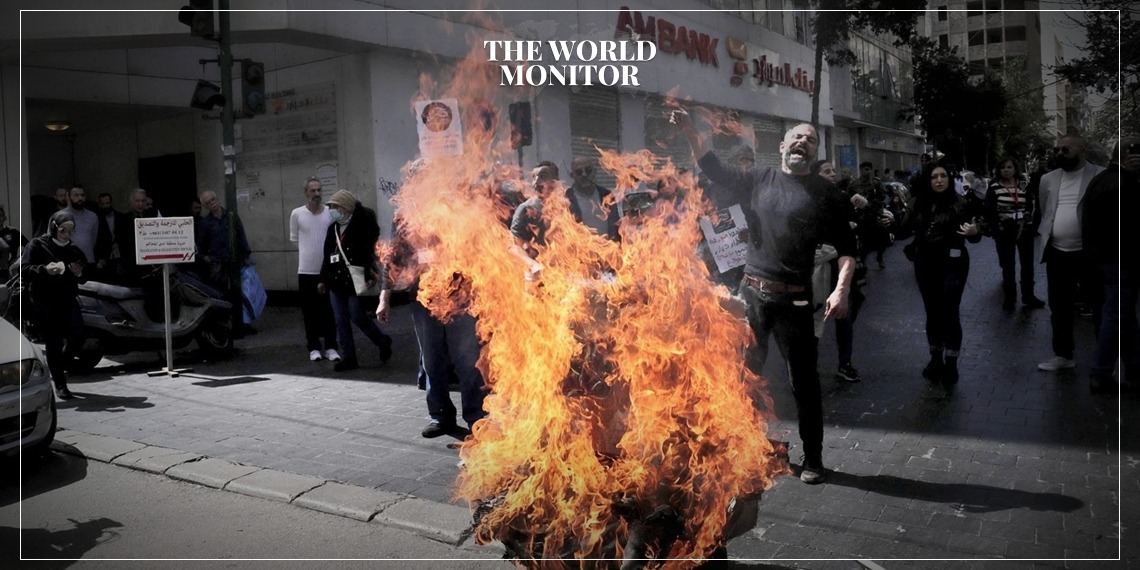On Thursday, dozens of Lebanese depositors staged widespread protests in Beirut, setting fires outside banks as they demanded the release of their trapped savings.
The demonstrations were fueled by growing frustration over the failure of authorities to resolve the issue of frozen deposits.
Protesters gathered in front of the Central Bank of Lebanon, various commercial banks, and the Lebanese Parliament building, voicing their anger at the lack of progress in addressing their financial plight.
Among the demonstrators were prominent figures, including Caretaker Minister of the Displaced Issam Sharafeddine and MPs Najat Saliba and Melhem Khalaf, who expressed their support for the depositors’ demands.
The demonstrators carried signs rejecting any law that does not return their full deposits and called for accountability for those responsible for the financial crisis.
They urged all depositors to join the protests and not remain passive in the face of what they consider to be legal and legitimate demands.
The protests later moved to the Dora area in Mount Lebanon, where demonstrators targeted several banks at the call of the “Cry of the Depositors” association.
They set fires outside the entrance of the Lebanese-French Bank and broke the windows of several other banks.
In a statement released during the protests, the demonstrators demanded a resolution to the issue of their frozen deposits, which have been inaccessible for five years. The statement indicated that the protesters initially gathered at the Al-Amin Mosque before marching to their targeted locations in Dora, where they attacked the Lebanese-French Bank, followed by the Arab Bank and Bank of Beirut and the Arab Countries.
The protesters set tires ablaze outside these banks as a symbolic act of defiance against what they described as the theft of their deposits and the imposition of exorbitant monthly fees on their accounts.
The association warned depositors of the government and banks’ proposed plans, which they believe would wipe out most of their savings. They also called for a revision of the bank withdrawal rates to align with the official exchange rate and demanded a comprehensive solution for all deposits, particularly those in Lebanese lira, which have lost significant value due to the currency’s devaluation.
Since 2019, Lebanon’s banking sector has imposed severe restrictions on withdrawals in foreign currency, limiting access to deposits and capping withdrawals in Lebanese lira. These measures have been a source of public outrage amid the country’s ongoing economic crisis.
According to the International Monetary Fund, Lebanon is facing an unprecedented banking and monetary crisis, with the economy contracting by approximately 40%. The Lebanese lira has lost 98% of its value, and inflation has soared to record levels. The protests reflect the deepening frustration of Lebanese citizens as they grapple with the financial collapse and demand solutions to recover their lost savings.






